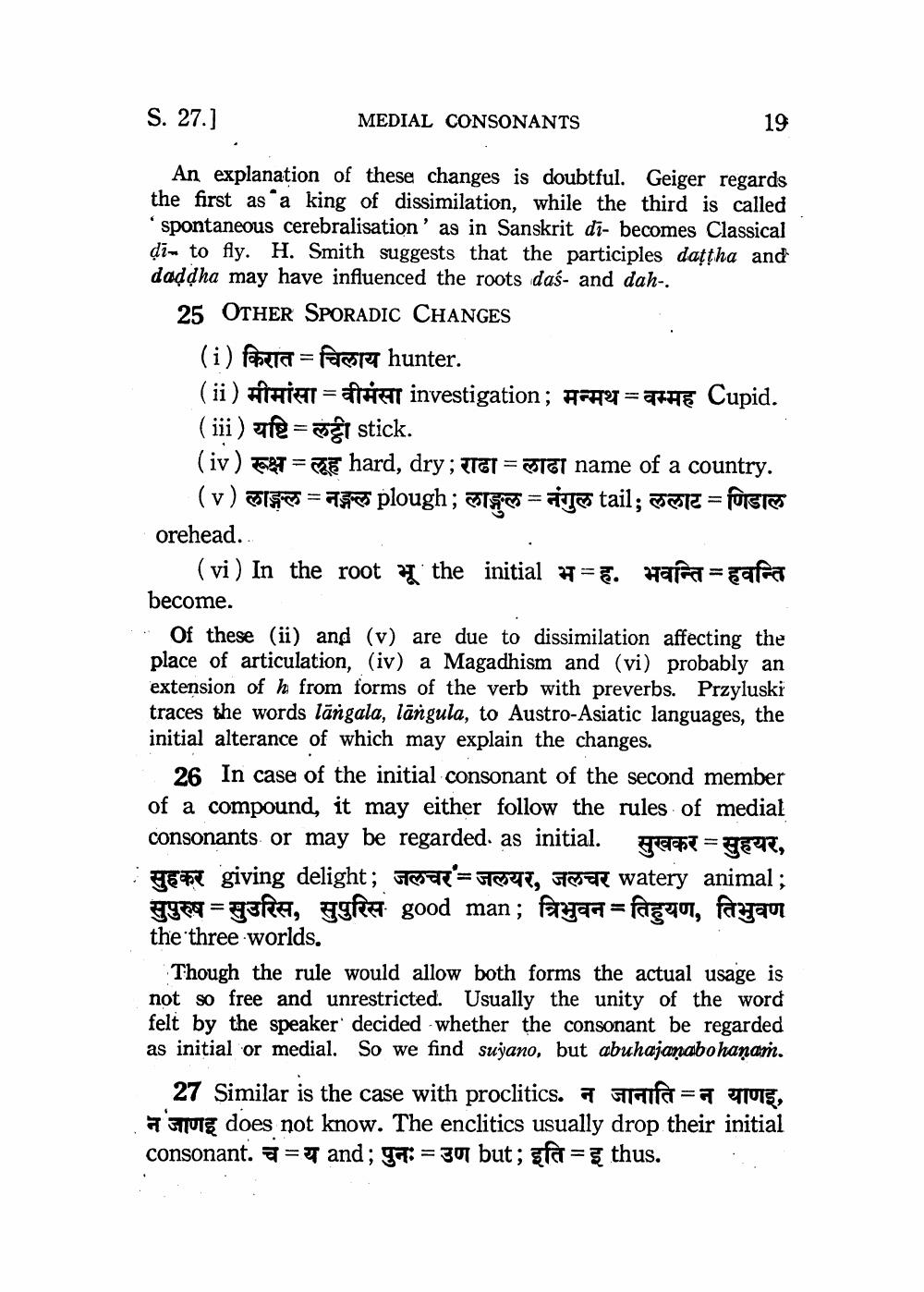________________
S. 27.]
MEDIAL CONSONANTS
19
An explanation of these changes is doubtful. Geiger regards the first as a king of dissimilation, while the third is called 'spontaneous cerebralisation' as in Sanskrit di- becomes Classical di- to fly. H. Smith suggests that the participles dattha and daddha may have influenced the roots das- and dah-. 25 OTHER SPORADIC CHANGES
(i) fara = fera hunter. (ii) HTHAT = afrüat investigation; #FAT=Q+HE Cupid. (iii) ofert stick. (iv) ET = pak hard, dry; TGI = GITI name of a country.
(v) s = 75 s plough; Jşs = yes tail; SOI = TUTET orehead.
(vi) In the root the initial =. Harmagara become. : Of these (ii) and (v) are due to dissimilation affecting the
place of articulation, (iv) a Magadhism and (vi) probably an extension of h from forms of the verb with preverbs. Przyluski traces the words längala, lângula, to Austro-Asiatic languages, the initial alterance of which may explain the changes.
26 In case of the initial consonant of the second member of a compound, it may either follow the rules of medial consonants or may be regarded as initial relat = TET,
6 giving delight; Fear'=F IT, Foere watery animal ; सुपुरुष =सुउरिस, सुपुरिस good man; त्रिभुवन = तिहुयण, तिभुवण the three worlds.
Though the rule would allow both forms the actual usage is not so free and unrestricted. Usually the unity of the word felt by the speaker decided whether the consonant be regarded as initial or medial. So we find sujano, but abuhajanabohanan.
27 Similar is the case with proclitics. a Girafa TTUTE,
flug does not know. The enclitics usually drop their initial consonant. च=य and; पुनः = उण but; इति =इ thus.




